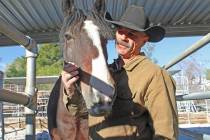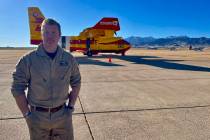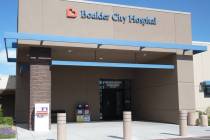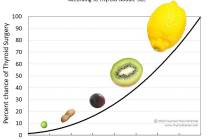Beware of signs of heat-related emergencies
Summer heat is officially here to stay. If you follow the local weather forecast, you are well aware of the triple-digit-temperature threats that are looming over us for the next few months. Many of you will surely be enjoying your days outdoors. Family barbecues, boating on the lake, camping and hiking, and dirt-biking seem to be locals’ favorite ways to get some exercise and spend quality time with loved ones.
However the environment we reside in has proven time and time again to be one of the biggest threats to our health and safety. Heat-related illnesses have become an all too common emergency to the Boulder City Fire Department. The department runs, on average two to four hyperthermia-related emergency calls per week this time of year, ranging from dehydration to heatstroke. By learning a few simple recognition techniques for hyperthermia, and how to treat and avoid such emergencies, your summertime escapades can be much safer.
Hyperthermia is defined in “Mosby’s Paramedic Textbook” as an abnormal rise in your body’s temperature secondary to environmental factors. Your body has a normal response to external temperatures rising; it’s called your thermoregulatory mechanism. This naturally occurring mechanism causes your body to sweat when you’re hot and shiver when you’re cold.
Your body strives to maintain a regular core body temperature of 98.6 degrees to preserve normal cellular and metabolic functions. As the environmental temperatures increase, your body tries to maintain a normal core body temperature by naturally cooling the body. If that fails, or you ignore your body’s physiological warnings, you may find yourself in danger. Hyperthermia is subcategorized into three varying levels: heat cramps, heat exhaustion, and heat stroke.
Heat cramps are the body’s first physiological warning that it is overheating and dehydrating. Your body’s first-line defense to keep cool is sweating. Your body can sweat 1 to 3 liters per hour, nearly a half-gallon. Coupled with the loss of sodium, which follows water, it’s easy to become severely dehydrated in a matter of hours.
This water sodium deficiency combines to cause muscle cramps, primarily in your large overexerted muscles first. Although your core body temperature may not yet be elevated, this is the first sign that you need to get out of the heat and start to replenish your fluids.
After the head cramps comes heat exhaustion, a more severe form of heat- related illness. Your body starts to develop mild to moderate forms of altered mental state. You will have all the same signs and symptoms of heat cramps and may start to feel irritable and dizzy. In more serious cases of heat exhaustion, you will develop nausea, headaches and an elevated core body temperature.
Heat exhaustion is classified as a core body temperature less than 103 degrees. With the profuse amount of sweating your body enters hypovolemia, also known as volume loss. Once this has occurred, the dizziness and nausea will increase, especially as you move from a sitting position to standing position. This is where fluid replacement therapy is required; firefighter paramedics will start an IV and place cold packs around your neck, armpits, and groin.
It is recommended that 911 is called and paramedics take you by ambulance to the hospital.
If heat exhaustion is left untreated, the last and final progression is heatstroke. Heatstroke is classified as a core body temperature elevated above 103 degrees. Heatstroke encompasses all the signs and symptoms of heat cramps and heat exhaustion with the added of multisystem tissue failure. Heatstroke is a medical emergency that if left untreated will result in permanent damage and/or death.
There are two types of heatstroke: classic heatstroke and exertional heat stroke. Classic heatstroke occurs during sustained periods of elevated heat and humidity; exertional heat stroke typically occurs during heavy exercise or work for a sustained time in the heat. In either situation the body is unable to dissipate the heat as fast as it is accumulated.
If someone has heatstroke, you’ll notice a change in his mental state — he’ll become confused, agitated and altered. As the blood volume in the person’s body begins to deplete, less oxygen-rich blood is getting to his brain and heart. Depending on the length of the episode, cerebral damage is likely to occur. So is heart tissue damage leading to irregular rhythms, which, if left untreated, could lead to death.
Convulsions can be common in heatstroke’s early and late stages. A noticeable increase in pulse rate and respiratory rate will be observable. These people are considered very sick. They risk irreversible tissue damage to the heart, brain, and other major internal organs, and need immediate life-saving interventions.
In all cases of hyperthermia, the first and most important thing to remember is to remove the people affected from the heat. Start a passive cooling and fluid replacement therapy.
Remember to drink plenty of water before going outside in the summer months, and continue to replenish fluids lost throughout the day. Avoid direct prolonged sun exposure, and take several breaks in the shade or indoors with air conditioning. In the summer months, you should run your air conditioner inside. A common problem with the elderly is overheating in their own homes; they may underuse air conditioning for fear of large electricity bills.
And never leave your children unattended in a closed and locked vehicle.
If you start to recognize these signs or symptoms of a heat-related illness, remove yourself from the environment. Your illness will not progress if you start to cool yourself down and replenish your fluids. Avoid alcohol or drugs, both recreational or prescription, which can inhibit your decision making and dehydrate you quicker than normal.
If at any time you are concerned, scared, or worried, call 911.
If you have any additional questions or comments, call me at the Boulder City Fire Department, 293-9228.
Brian Shea is a Boulder City paramedic/firefighter. If you have further questions about this or any fire safety issue, contact the Boulder City Fire Department at 293-9228.











